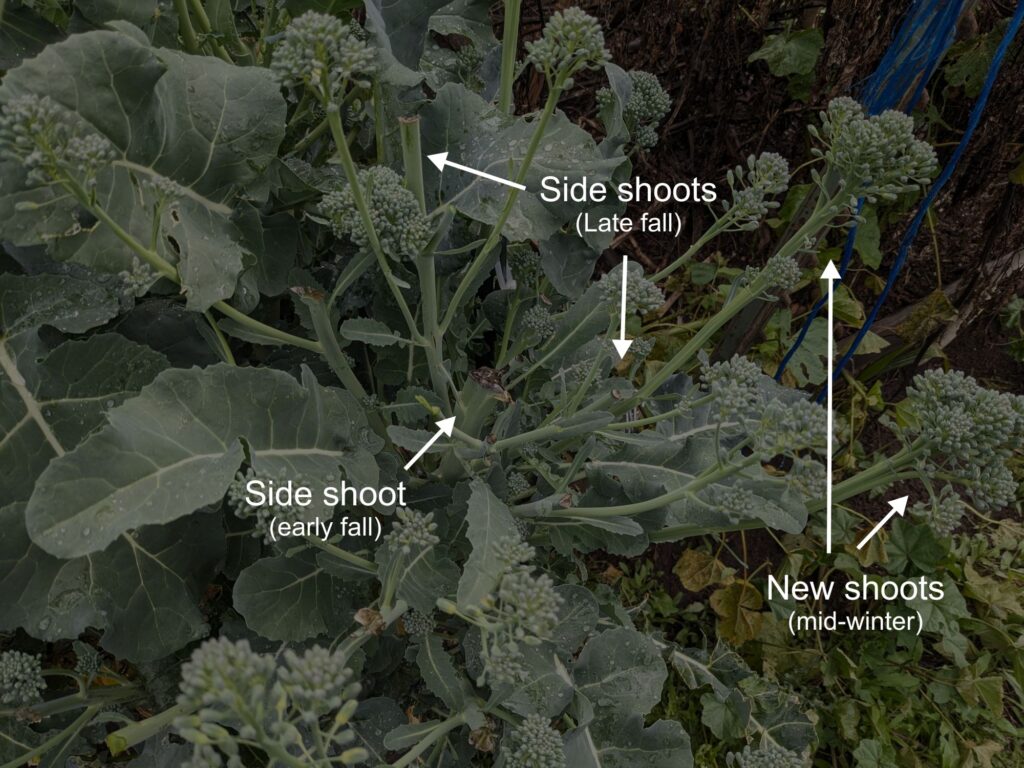How to Grow Broccoli as a Perennial
Did you know you can grow broccoli like a shrub and have garden fresh veggies year-round? Here’s how
My lazy gardening tendencies generally work against me, leaving far too many weeds and more lost vegetables than I care to admit. But, once in a while, they work in my favor.
The discovery that broccoli, as well as some close relatives like cauliflower and a few cabbages, can be grown like perennial shrubs and provide you with garden fresh food nearly year-round is one of those lucky discoveries I can chalk up to that aversion to garden work.
As I write this in early February of 2024, I have one patch of broccoli that began as two seedlings in the spring of 2020 still going strong, producing alternating crops of large heads and small shoots every four weeks or so.
It turns out, a number of members of the brassica family — which includes broccoli, cauliflower, brussels sprouts, cabbages, and mustards — are actually shrubs that grow for years in their native Mediterranean habitat. While centuries of human cultivation and hybridization have made most vegetable garden varieties annuals or biennials, some can easily be coaxed to return to their wild, bushy ways.
How to Grow Broccoli as a Perennial
Choose the right variety
The first thing you want to do when growing broccoli as a perennial is to select an heirloom or open pollinated variety like Waltham.
Most of the newer hybrids have been bred to produce large, dense heads in a single season. Because these plants put so much energy into putting out one big flower, they tend not to be as hardy and won’t grow back after the head has been cut.
On the other hand, older varieties, like Waltham, are more like their wild cousins. While they’re not as compact as modern hybrids, they will keep growing, putting out side-shoots and flowers over a long period.


Cutting the plant back
Assuming you started your broccoli in late winter or early spring, your first harvest is usually one big head in late spring.
You can cut that one and continue letting the plant grow side shoots, making sure to harvest them before they start to turn to flowers and yellow petals emerge.In mid-to-late summer, cut the plant down to the first set of leaves above the soil. New shoots will emerge from the leaf nodes. Allow these to grow as you did the main stem until they start to flower.
You will probably get only one large flower per stem. Harvest the heads and allow them to grow side shoots. At this point, the two original shoots off the first stem will start spreading out and thickening.
Rooting new plants
As the weather cools in fall, allow the two secondary stems to touch the soil. They will start to grow roots, and the plant will start to shrub out like a multi-stemmed bush.
If you’re in a warmer zone (USDA 7 and above), your plants will probably flower with broccoli florets again in mid-to-late fall. Harvest these before the flower petals emerge.
In winter, if you’re in a place that gets a hard freeze or snow, cover the plants to protect them from the harshest weather. If you’re in a warmer zone (as we are here in San Diego), you can leave them uncovered and they’ll continue to produce shoots, albeit more slowly.


Cut and repeat
Once spring begins to approach, you can cut the plants back to the first leaves above the soil on the (new) main stems and allow them to grow again. Each time you do you should get two new sets of stems, each of which will produce flowers.
Depending on the variety of broccoli, these should alternate between a single large floret and several smaller ones each time you harvest (this is what the Waltham does).
As long as you don’t allow the plants to produce flowers, they will continue to grow for years, producing fresh broccoli for you to harvest every 4 to 6 weeks!
↓ Have a thought about this? Leave a comment below ↓










My broccoli (because I have a phobia about killing that which wants to grow!) is huge! Late summer and the original heads bolted to flower before they could be picked but now the plants are thriving and healthy! I have never heard of a “perenial” broccoli but now I’m going to follow your advice and see what happens! Thank you. Lakesusy
Go for it! You won’t be disappointed.
I left the broccoli roots in my raised beds over the winter. Expected them to break down in the soil. Two of them survived a very cold winter, -20 F and started to grow this spring. Leaves are delicious by the way.
Yeah, brassicas are tough!